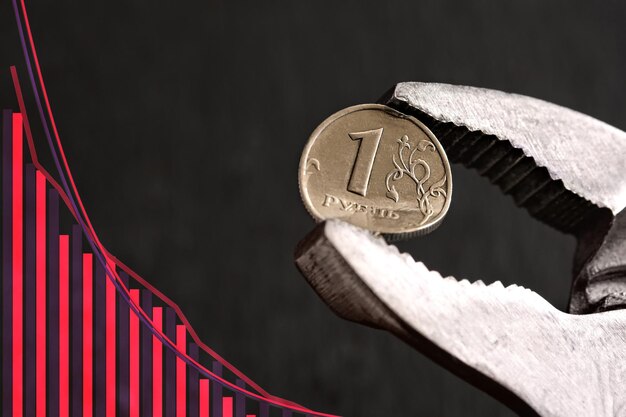The Triple Top Pattern – A Comprehensive Guide to Identifying, Analyzing, and Trading the Reversal Chart Pattern in Financial Markets
Are you an aspiring trader seeking to deepen your knowledge and enhance your skills in the dynamic realm of financial markets? Look no further, as we immerse ourselves into the captivating universe of the Triple Top pattern. This extraordinary phenomenon unfolds within the charts, providing traders with a valuable tool to identify potential market reversals. In this comprehensive guide, we’ll explore the intricacies of this pattern, from its origins to its significance in the context of trading strategies.
Immerse yourself in the adventure as we embark on a journey to unravel the mysteries and nuances of the Tripling Peaks. By the end of this guide, you will be equipped with the essential knowledge to identify and maximize opportunities in the market. Throughout the comprehensive exploration, we’ll delve into the historical origins and evolution of this pattern, unearthing the characteristics that make it a significant indicator for potential reversals in the financial market.
As our expedition continues, we’ll dive into the intricate details that comprise the Triple Top pattern, unveiling the subtle differences that can separate success from failure in trading. By employing visual analysis, this guide will help you recognize the pattern’s distinctive features, honing your ability to accurately identify potential market reversals. Furthermore, we will examine the psychology behind this pattern, providing insights into how market sentiments influence its formation and subsequent trading opportunities.
Nevertheless, knowledge alone is not enough to conquer the treacherous waves of the financial market. Therefore, we’ll equip you with practical trading strategies that capitalize on the Triple Top pattern’s signaling capabilities. You’ll gain a profound understanding of the best entry and exit points, risk management techniques, and cautionary advice to help you navigate the market with confidence and minimize potential losses. Whether you’re a seasoned trader or new to the world of finance, this guide will prove invaluable in enhancing your trading arsenal.
Prepare yourself to unlock the secrets hidden within the Triple Top pattern and embark on a journey that will transform you from an ordinary trader to a formidable player in the financial market. The lights are dimmed, the stage is set – let’s delve into the enchanting realm of the Tripling Peaks!
Understanding the Triple Top Pattern
The Triple Top Pattern is a significant technical signal frequently observed in financial markets. It occurs when the price of an asset reaches a specific level three times, creating a distinct chart formation. Traders who understand and can identify this pattern gain an advantage in predicting potential price reversals and making profitable trading decisions.
Recognizing the Triple Top Pattern
Recognizing the Triple Top Pattern involves observing a series of price movements on a chart. Traders often refer to this pattern as a “resistance zone” since the asset’s price fails to break above a specific level on multiple occasions. This failure to surpass the resistance level reveals a potential weakness in the market, suggesting that a reversal may be imminent.
When analyzing the Triple Top Pattern, traders should look for three similar highs in the price activity, with each high failing to break above the resistance level previously established. These highs should be roughly equal in height and share a common price level. Identifying this pattern requires careful examination of historical price data and the ability to spot recurring and reliable chart formations.
Interpreting the Triple Top Pattern
Interpreting the Triple Top Pattern involves assessing the potential future price movements of the asset. Once the pattern is confirmed, traders anticipate that the price will reverse its course and decline. This reversal is considered a signal to sell or open short positions. The level of the previous support, which was tested but not broken, becomes the target at which traders expect the price to drop to.
In addition to the visual confirmation of the Triple Top Pattern, traders often employ technical indicators such as volume, trend lines, or oscillators to validate their analysis. These tools help confirm the pattern’s reliability and provide further evidence for potential price reversals.
- Traders aim to enter a short position as the price violates the support level, indicating a high probability of a downward trend.
- Applying appropriate risk management techniques, such as setting stop-loss orders, can help traders limit potential losses if the price unexpectedly reverses.
- It is important to note that not every pattern will result in a successful reversal. Traders need to evaluate other factors such as market conditions, news events, and overall price trends to make well-informed trading decisions.
Understanding the Triple Top Pattern and applying proper analysis techniques can significantly enhance a trader’s ability to identify potential trend reversals and profit from them. It is crucial to conduct thorough research, practice, and continuously improve one’s technical analysis skills to make the most informed trading decisions.
Identifying the Triple Top Pattern
When it comes to technical analysis in the financial markets, one of the key skills that traders must possess is the ability to identify and interpret different chart patterns. These patterns can provide valuable insights into the future direction of a specific asset’s price movement. One such pattern that traders often look for is the Triple Top Pattern.
Understanding the Triple Top Pattern
The Triple Top Pattern is a reversal pattern that typically occurs after a prolonged uptrend in the price of an asset. It is characterized by three consecutive highs that are approximately equal in height, forming a horizontal resistance level. The pattern suggests that the upward momentum is weakening, and there is a higher probability of a trend reversal.
To identify the Triple Top Pattern, traders need to carefully analyze the price chart of the asset in question. The three highs should be visually identifiable as peaks, with approximately the same price level. It is important to note that the time duration between the highs can vary, ranging from a few weeks to several months.
Confirmation and Validity
While identifying the Triple Top Pattern is a good starting point, it is essential to confirm the pattern and assess its validity. Traders often use additional technical indicators and tools to confirm the reversal pattern, such as volume analysis and momentum oscillators.
Once the Triple Top Pattern is confirmed, traders may look for specific entry and exit points to capitalize on the potential trend reversal. This can include placing a short trade when the price breaks below the support level formed by the pattern, or setting a target price based on the projected distance between the highs and the support level.
- Look for three consecutive highs with similar price levels.
- Consider the time duration between the highs.
- Confirm the pattern using additional technical indicators.
- Plan entry and exit points based on the pattern’s projection.
By mastering the skill of identifying the Triple Top Pattern, traders can enhance their ability to predict trend reversals and make informed trading decisions. It is important to remember that no pattern guarantees a specific outcome, so proper risk management and ongoing analysis are crucial in trading.
Key Characteristics of the Triple Top Pattern
In this section, we will explore the main features that define the Triple Top Pattern, a popular chart pattern used in technical analysis to identify potential trend reversals in the financial markets. Recognizing these key characteristics can help traders make informed decisions when trading this pattern.
Price Resistance Level
One of the fundamental characteristics of the Triple Top Pattern is the presence of a strong price resistance level. This resistance level acts as a barrier preventing further upward movement in the price of an asset. Traders observe that the price reaches this level on three distinct occasions, forming a pattern that resembles the shape of three mountain peaks.
Consolidation Phase
Another important characteristic of the Triple Top Pattern is the consolidation phase that occurs after each peak. During this phase, the price retreats from the resistance level and temporarily consolidates within a trading range. This consolidation is often interpreted as a sign of indecision between buyers and sellers, indicating a potential trend reversal.
These are just some of the key characteristics of the Triple Top Pattern. By understanding and recognizing these features, traders can enhance their ability to identify and trade this popular reversal pattern effectively.
Trading Strategies for the Triple Top Formation
When analyzing price charts, one particular pattern that traders often come across is the triple top formation. This pattern typically appears after a prolonged uptrend and indicates a potential reversal in the market. By understanding different trading strategies suitable for the triple top formation, traders can make informed decisions and capitalize on potential profit opportunities.
1. Confirming the Pattern
Before implementing any trading strategy, it is crucial to confirm the presence of a triple top formation. This can be achieved by identifying three distinct peaks in the price chart, with each peak reaching a similar level. Traders can use indicators such as moving averages, volume analysis, or oscillators like the Relative Strength Index (RSI) to validate the pattern.
2. Entry and Exit Points
Once the triple top pattern is confirmed, traders can establish entry and exit points for their trades. A common strategy is to enter a short position after the price breaks below the support level, which is formed by connecting the troughs between the peaks. This breakdown is considered a bearish signal and can be an optimal entry point for traders. To determine the exit point, traders can use techniques like setting a take profit target based on the depth of the pattern or implementing trailing stop-loss orders.
3. Risk Management
Risk management is a crucial aspect of any trading strategy, including those for the triple top pattern. Traders should always define their risk tolerance and set appropriate stop-loss orders to mitigate potential losses. Additionally, it is essential to monitor the overall market conditions, including relevant news and economic indicators, to assess potential risks and adjust trading positions accordingly.
4. Confirmation Signals
To enhance the effectiveness of the trading strategy, traders can look for additional confirmation signals. These signals can include bearish candlestick patterns, such as evening stars or bearish engulfing patterns, which indicate increasing selling pressure. Additionally, monitoring the volume during the breakdown of the support level can provide further validation of the pattern.
- Implement a strict risk management plan.
- Monitor relevant news and economic indicators.
- Look for additional confirmation signals.
- Consider the overall market conditions.
- Implement trailing stop-loss orders.
By employing these trading strategies for the triple top formation, traders can potentially identify profitable trade setups and take advantage of the reversal pattern. However, it is essential to conduct thorough analysis and practicetrading strategies using demo accounts before applying them in live trading scenarios.
Managing Risk and Setting Profit Targets
When it comes to trading patterns, it is crucial to have a clear understanding of managing risk and setting profit targets. By effectively managing your risk, you can minimize potential losses and protect your trading capital. Additionally, setting profit targets allows you to maximize your gains and determine when to exit a trade.
The Importance of Risk Management
Risk management plays a vital role in any trading strategy. It involves assessing and mitigating potential risks associated with your trades. By implementing proper risk management techniques, you can protect your capital and prevent significant losses in case the trade doesn’t go as planned.
One fundamental aspect of risk management is determining the appropriate position size for each trade. This involves assessing the potential risk versus reward ratio and ensuring that you are comfortable with the amount of capital you are willing to put at stake.
Implementing stop-loss orders is another important risk management technique. By setting a predetermined level at which you will exit a trade if it goes against you, you can limit your losses and protect your overall portfolio.
Setting Profit Targets
While managing risk is crucial, setting profit targets is equally important in trading. Setting a profit target helps you define your trading goals and determine when to exit a trade to secure your gains.
One common approach is to use technical analysis to identify potential support or resistance levels as profit targets. By analyzing past price movements and identifying key levels on a chart, you can set realistic profit targets based on historical price behavior.
Another technique is using trailing stop orders. This involves adjusting your stop-loss order as the price moves in your favor, allowing you to capture more profit if the trend continues. Trailing stops can be an effective way to lock in profits while still giving your trade room to grow.
In conclusion, effective risk management and setting profit targets are essential elements of successful trading. By managing your risk and setting realistic profit targets, you can enhance your trading strategy and increase your chances of achieving consistent profitability.
Questions and answers: Triple top pattern
What is a Triple Top pattern?
A Triple Top pattern is a reversal pattern that occurs in technical analysis. It is characterized by three consecutive peaks at approximately the same price level. This pattern indicates that the price is struggling to break above a certain level, and it often signals a potential trend reversal from bullish to bearish.
How can I identify a Triple Top pattern in a price chart?
To identify a Triple Top pattern, look for three consecutive peaks at approximately the same price level. These peaks should be followed by a downturn, indicating a failure to break above that level. You can also use trendlines to connect the peaks and confirm the pattern. Additionally, you may want to analyze other technical indicators or volume patterns to further validate the Triple Top formation.
What is the significance of a Triple Top pattern?
A Triple Top pattern is significant because it suggests that the price has reached a resistance level and is struggling to go higher. It indicates that the market sentiment may be shifting from bullish to bearish, and provides traders with a potential opportunity to profit from a downward reversal in price. However, it is always important to consider other factors and use proper risk management strategies before making trading decisions based solely on this pattern.
How can I trade a Triple Top pattern?
To trade a Triple Top pattern, traders often wait for the confirmation of a breakdown below the support level formed by the pattern. This breakdown is seen as a signal to enter a short position, anticipating further downward movement in the price. Traders may place a stop loss above the highest peak of the pattern to manage risk, and set profit targets based on the potential downward movement. However, it is recommended to use additional analysis and indicators to increase the probability of a successful trade.
Are there any limitations to the Triple Top pattern?
Yes, there are limitations to the Triple Top pattern. It is important to note that not all Triple Tops lead to a significant trend reversal. Sometimes, the price may break above the resistance level instead of moving downwards. It is also possible for the price to consolidate or continue its previous trend after forming a Triple Top pattern. Therefore, it is crucial to use other technical analysis tools and risk management strategies to confirm the validity of the pattern and avoid false signals.
What is a triple bottom pattern?
A triple bottom pattern is a bullish reversal chart pattern that consists of three consecutive lows at approximately the same price level, signaling a potential trend reversal from bearish to bullish.
How does a breakout occur in the context of a triple top pattern?
A breakout in a triple top pattern occurs when the price breaks below the support level established by the triple tops, confirming the bearish reversal and potentially indicating further downward movement.
What is a head and shoulders pattern, and how does it relate to the triple top pattern?
A head and shoulders pattern is a bearish reversal pattern characterized by three peaks, with the middle peak (the head) being higher than the two outside peaks (the shoulders). It relates to the triple top pattern as both are bearish reversal patterns indicating a shift from bullish to bearish sentiment.
How can traders trade the triple bottom pattern?
Traders can trade the triple bottom pattern by entering long positions when the price breaks above the resistance level established by the triple bottoms, with stop-loss orders placed below the lowest low of the pattern to manage risk.
What is the significance of the triple top breakout in technical analysis?
A triple top breakout in technical analysis signals a confirmed bearish reversal, as the price breaks below the support level formed by the triple tops, indicating a shift in market sentiment from bullish to bearish.
What are some key characteristics of the triple top pattern?
Some key characteristics of the triple top pattern include three consecutive peaks at approximately the same price level, with the middle peak being slightly higher than the other two, signaling a potential trend reversal from bullish to bearish.
What is the role of market sentiment in identifying and trading the triple top pattern?
Market sentiment plays a crucial role in identifying and trading the triple top pattern, as the pattern indicates a shift in sentiment from bullish to bearish, influencing traders to take short positions or exit long positions.
How does the triple top pattern signal a potential trend reversal?
The triple top pattern signals a potential trend reversal by forming three consecutive peaks at approximately the same price level, followed by a breakdown below the support level, confirming the bearish reversal and potentially leading to further downward movement.
What are some common trading strategies for trading the triple top pattern?
Some common trading strategies for trading the triple top pattern include entering short positions when the price breaks below the support level established by the triple tops, with stop-loss orders placed above the highest high of the pattern to manage risk.
What distinguishes the triple top pattern from other chart patterns?
The triple top pattern is distinguished by its formation of three consecutive peaks at approximately the same price level, followed by a breakdown below the support level, signaling a bearish reversal and potential trend change.








No responses yet